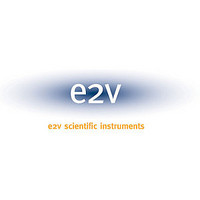TS68C429AMFA E2V, TS68C429AMFA Datasheet - Page 21

TS68C429AMFA
Manufacturer Part Number
TS68C429AMFA
Description
Manufacturer
E2V
Datasheet
1.TS68C429AMFA.pdf
(46 pages)
Specifications of TS68C429AMFA
Operating Supply Voltage (typ)
5V
Operating Supply Voltage (min)
4.5V
Operating Supply Voltage (max)
5.5V
Operating Temp Range
-55C to 125C
Operating Temperature Classification
Military
Mounting
Surface Mount
Pin Count
132
Lead Free Status / Rohs Status
Compliant
9.2.1
e2v semiconductors SAS 2008
Description
Figure 9-1.
The block diagram of a transmit channel is given is given in
switched to internal lines for test mode, otherwise the channels are identical. The selection of this test
mode is done by programming the test bit in the transmitter-control-register (see
on page
The transmit frequency is generated by dividing the ARINC clock signal (CLK ARINC) by the value con-
tained in the frequency register. This divided clock synchronizes the shift register which sends the 32-bit
word on the lines TXiH and TXiL.
The parity is computed and if requested (see
the message) is modified to have an odd number of “1” in the 32-bit message for odd parity or an even
number of “1” in the 32-bit message for even parity.
A gap control block generates a gap between the sent messages. The value of this gap is defined by the
5 bits “transmission gap” of the transmitter-control-register, it is given in number of ARINC bit (see
ister Description” on page
A FIFO control block manages the messages to be sent. Up to 8 messages can be written into the FIFO.
The FIFO is seen as a two 16-bit memory words, the Most Significant Word of the message (MSW) is
written in the lower address, the Least Significant Word of the message (LSW) is written in the upper
address. The MSW should be written first. The access to the FIFO is 16 bits mandatory. The number of
messages within the FIFO is indicated by a counter that can be read through the transmitter-control-reg-
ister. This counter is incremented when the LSW is written and decremented when the message is
transferred to the shift-register. The “Reset FIFO” bit is used to cancel messages within the FIFO. If a
transmission is on going, the entire message will be sent. The “reset FIFO” bit remains active until writ-
ten at 1 by the microprocessor. When the transmitter is disable during a transmission, the out going
message is lost.
When the FIFO is empty, a bit is set in the status-register (see
the interrupt mode is enabled (see
When the transmitter FIFO is empty and when no transmission is on going, the first write access to the
FIFO has to be preceded by the following sequence: disable and enable transmission (see
First FIFO access).
17). In this test mode the lines TX3H and TX3L are not driven, they are both kept at “0”.
Transmitter Channel Unit Outputs
17).
“General Circuit Control” on page
“Register Description” on page
Figure
“General Circuit Control” on page
9-2. Only the third channel can be
24) the IRQTX line is activated.
17) the parity bit (32nd bit of
0848E–HIREL–02/08
“Register Description”
TS68C429A
Figure
24). If
“Reg-
10-9:
21











